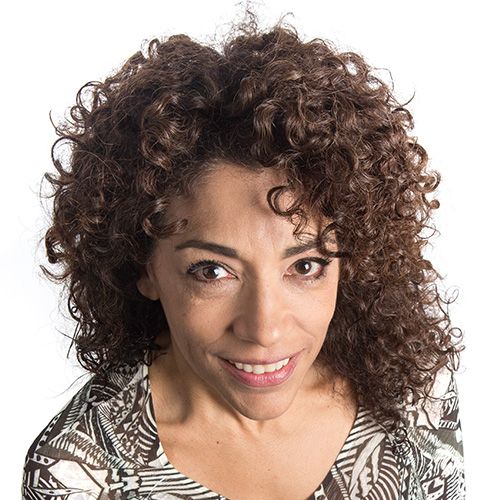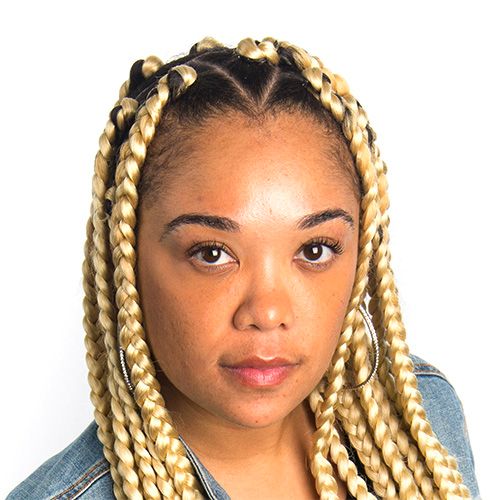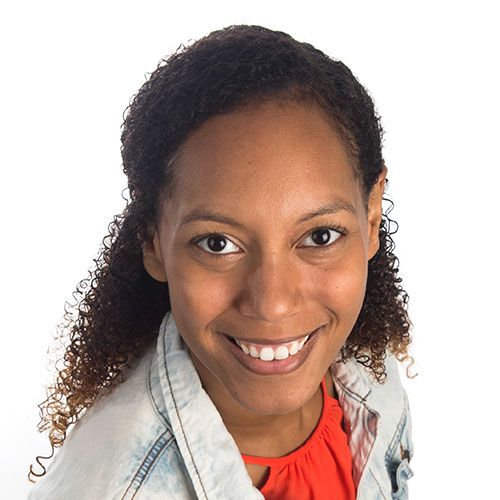Pedro Jimenez expected to find evidence of some discrimination as a Hispanic searching for a home on Long Island. He found more than he imagined as a member of the Island’s largest minority group.
Jimenez asked eight real estate agents for help buying houses as a paired tester in Newsday’s investigation of discrimination in real estate sales. Five of the eight tests produced evidence that agents had subjected Jimenez to unequal treatment when compared with his white counterparts.
“It is alarming. It is crazy,” he said. “It’s 2018, I cannot stress that enough – this is 50 years after the civil rights marches. I remember all sorts of people saying, well, we’re post racial, we voted a black president. No, we’re not. Obviously, we are not.”
Jimenez, 45, is a computer and internet professional who was born in the Dominican Republic.
As a boy of 5, he followed his mother to immigrate legally to the United States. He grew up in the Corona section of Queens, attended New York City public schools and helped his mother earn income by making belts in the family’s apartment.
Jimenez also remembers that the social surroundings taught him to distinguish between light-skinned and dark-skinned fellow Hispanics, those of darker tones being looked down upon.
The milieu also included attitudes toward women and gays that he long ago grew to consider backwards.
“I’ve been everything. I’ve been the misogynist. I’ve been the racist. I’ve been the homophobe. Over time I just came to learn almost in evolutionary steps there is no basis for those things,” Jimenez said. “You don’t know these people, how can you cast this light on people you don’t know? And not only that, but by having this view I am causing this suffering.”
That evolution, Jimenez believes, outpaced the attitudes of real estate agents he encountered as an undercover tester.
“What this says to the Latino population is that, clearly, you’re going to be steered, especially if you leave yourself at the mercy of the agent,” he said.
Latinos compose 18 percent of the Island’s population, according to 2017 census estimates, followed by blacks at 9 percent and Asians at nearly 7 percent. They are spread widely, with 90 percent of the population living in 120 of the Island’s 291 communities. The United States Census Bureau defines Hispanics and Latinos as people of Cuban, Mexican, Puerto Rican, South or Central American or other Spanish culture or origin regardless of race.
Jimenez was one of five Hispanic testers who went undercover in Newsday’s investigation.
They engaged with agents representing 12 of the Island’s largest brokering firms in offices located from Massapequa Park, Brentwood and East Hampton on the South Shore to Great Neck and Northport on the North Shore. Using aliases with Hispanic surnames, they said they were looking for houses with prices that ranged from $400,000 to $3 million.
All told, Newsday’s:five Hispanic testers met evidence of disparate treatment
39% of the time
Jimenez, Ashley Creary, Nana Ponceleon, Liza Colpa and Jesus Rivera went house hunting 31 times while paired with matching white testers. Twelve of the tests showed evidence that agents:
- Provided the group 12 percent fewer listings than the white buyers in those tests, with the gap larger in the overwhelmingly white communities of Rockville Centre, Oceanside, Roslyn, Levittown, Merrick and Kings Park. There, the agents gave white testers seven times more homes to consider than they provided to matching Hispanic testers.
- Focused Hispanic testers on houses in 18 census tracts in the Town of Huntington that took in the downtown area, then stretched north to Halesite and south to Huntington Station, South Huntington and West Hills. They picked listings in these areas for Hispanic testers at double the rate they did for white buyers. Eleven of the 18 tracts show growing Hispanic populations.
- In one case, imposed more stringent requirements on a Hispanic tester than a white buyer, amounting to a denial of equal service, according to evaluations by Newsday’s fair housing consultants.
Following are three case histories showing evidence that Hispanic house hunters experienced disparate treatment, along with the findings of Newsday’s fair housing consultants Fred Freiberg and Robert Schwemm.
The opinions of Freiberg and Schwemm are based on data provided by Newsday. Their judgments are not legal conclusions.
The case histories each include the experts’ findings, and responses of agents and the companies they represent.
Agent gives fewer listings to Hispanic buyer, directs him to more diverse communities
Richard Helling and Pedro Jimenez presented identical requests to Charles Rutenberg agent Maurice Johnson three weeks apart in the spring of 2017: As first-time house hunters who were new to Long Island, each sought help finding a $500,000 home within 20 minutes of Garden City.
Johnson mentioned 12 communities as possibilities to Helling, who is white, and suggested that he might like to live in waterfront communities.
While meeting with Jimenez, who is Hispanic, Johnson offered no list of communities and did not mention the waterfront.

Hispanic Tester:
Pedro Jimenez
Listings Given:
100
Census Tracts:
56% white on average

White Tester:
Richard Helling
Listings Given:
147
Census Tracts:
64% white on average
Johnson told Helling that Half Hollow Hills, at the time 59 percent white, was a “good school district” and expressed regret that, in his view, the law would bar him from warning a customer away from overwhelmingly minority Wyandanch, where, he said, “the school district is underperforming.”
His listings gave Helling almost 50 percent more home choices to consider than Jimenez – 147 to 100.
Comparable numbers of similarly priced homes were on the market in the area at the times of the two tests, according to Zillow, the internet-based house-listing service. Zillow drew the data for Newsday at no cost from the Multiple Listing Service of Long Island, the online network used by agents to keep up with properties for sale.
The house selections also directed Helling to tracts whose white populations were on average 8 percentage points higher than in the tracts to which he pointed Jimenez: 64 percent white to 56 percent white.
The listings map shows that he pointed Helling toward:
- 86 percent white Oceanside with 16 listings, offering none there to Jimenez.
- 86 percent white Merrick and North Merrick with 19 listings, recommending only two there to Jimenez.
- 66 percent white Mineola with four listings, providing none there to Jimenez.
At the same time, Johnson directed Jimenez toward:
- 85 percent minority Elmont with seven listings, giving none there to Helling.
- 66 percent minority Baldwin and North Baldwin, as well as 51 percent minority Baldwin Harbor with 15 listings, offering Helling five in Baldwin and Baldwin Harbor.
- 81 percent minority Malverne School District with 11 listings, recommending none there to Helling.
Experts’ Findings
Freiberg: The agent’s conduct on this test raises a concern about possible racial steering. The agent told the white tester about a school district that is good, Half Hollow Hills (59 percent white), and states that he is not allowed to tell buyers that an adjacent school district, Wyandanch (1 percent white), is under-performing. He does not provide these examples to the Hispanic tester but refers both testers to greatschools.org to obtain more information about schools. Most of the home listings the agent selected in the predominantly white communities of Merrick, Island Park, Rockville Center and Oceanside were given to the white tester. Most of the home listings the agent selected in the predominantly minority communities of Baldwin and Elmont were given to the Hispanic tester, as well as the Malverne School District.
Schwemm: Lots of apparent steering here.
From west to east, the agent seems to have provided four differing groups of listings:
The agent located the most listings for the Hispanic tester in the far westerly area, particularly to the north with highly diverse schools.
In the second westerly area, the agent placed a few Hispanic listings, in the most diverse parts, while placing mostly white listings in the least diverse school districts.
The second most easterly area shows few Hispanics listings with mostly white listings in the least diverse school districts.
In the most easterly area, the agent placed the Hispanic tester’s listings in the north and the white tester’s listings in the south, where schools are less diverse.
Agent’s Response
Informed of Newsday’s findings, Johnson did not respond personally. His lawyer, R. Joseph Coryat, reviewed both the video recordings of Johnson’s meetings with testers and the maps of where he placed listings for each tester. Newsday provided Coryat copies of all communications between the testers and Johnson.
He accused Newsday of unfairly editing one of Johnson’s videos because the first 10 seconds of greeting between Johnson and a tester were trimmed to protect the privacy of unrelated third parties. Newsday gave Coryat a transcript of the trimmed section and invited him to view it. He never did so.
Newsday also sent Coryat specific questions about how Johnson selected the listings and provided excerpts of moments during the meetings that appeared to have been of interest to Coryat after he viewed the videos. He did not answer the questions.
Joseph Moshe, founder of Charles Rutenberg Realty, viewed Newsday’s recordings of three Charles Rutenberg agents, including Johnson. Subsequently, he offered no comments.
Agent points Hispanic buyer toward minority school districts, does opposite for white buyer
Seven months apart, Nana Ponceleon and Kimberly Larkin-Battista told Charles Rutenberg agent Stephanie Giordano that each had a school-age child and was seeking to buy a $400,000 house within 30 minutes of Brentwood.
Ponceleon is Hispanic from Venezuela. She used the alias Rita Viloria and said her husband was Luis. Larkin-Battista is white. She used the alias Karen Wally. Her husband’s name did not come up in the conversation.
Giordano advised each to research the quality of schools in communities where they might want to live and said she would provide a link to a helpful digital database.
The school districts in and around Brentwood varied in the makeup of their student bodies and educational performance. Comparing their high schools offers a picture.
Brentwood High School’s student population in 2018 was 83 percent Hispanic, 11 percent black, 4.2 percent white and 2 percent Asian. Twenty-one percent of the 1,500 graduates earned a Regents Diploma with Advanced Designation, signaling they had passed at least eight Regents exams, New York State Education Department statistics show.
In the adjoining district, Bay Shore Senior High School had 474 graduates, with 35 percent earning advanced designation diplomas. The high school’s demographics broke down as 43 percent Hispanic, 30 percent white, 21 percent black and 5 percent Asian, state statistics show.
To the north and east, two Sachem district high schools combined for the graduation of 1,106 students, with 59 percent earning advanced designation diplomas. State statistics show their full student bodies were approximately 77 percent white, 12 percent Hispanic, 8 percent Asian and 3 percent black. Closer to Brentwood is the Connetquot district, which in 2018 graduated 481 students, with 63 percent earning advanced designation diplomas. Its student body was 77 percent white, 14 percent Hispanic, 6 percent Asian and 2 percent black. After Ponceleon told Giordano that she worked close to the city, Giordano said that she would focus the house search narrowly. “In Brentwood Bay Shore areas – we’ll try to keep you around here,” she said, referring to two predominantly minority communities.

Hispanic Tester:
Nana Ponceleon
Listings Given:
76
Census Tracts:
65% white on average

White Tester:
Kimberly Larkin-Battista
Listings Given:
155
Census Tracts:
81% white on average
Although Ponceleon had told Giordano that distance was not an immediate concern, Giordano added: “Also, what – I don’t want to bring you any further out east because you travel to New York.”
While meeting with Larkin-Battista, who said that she worked as a teacher in Queens, Giordano recommended searching in areas other than Brentwood. Referring to Larkin-Battista’s husband, she said:
“If he’s in Brentwood, you’re gonna want to be in the – the surrounding areas.”
After telling Larkin-Battista “to really kind of zone in on” school ratings, she added, “the areas that could surround would be Bay Shore, Islip. You could even do Hauppauge.”
Giordano sent Ponceleon 74 listings. As she had indicated, she weighted them toward Brentwood and Bay Shore. The listings included 27 houses in Bay Shore, including nine in the Brentwood school district, and spread the rest farther east. They fell in tracts with populations that average 66 percent white.
In contrast, Giordano provided Larkin-Battista double the number of listings, 152, none in Bay Shore or the Brentwood school district. Instead, she distributed them as much as 14 miles to the east in predominantly white Farmingville. The tracts averaged 81 percent white. She offered Ponceleon no listings in Farmingville.
Based on school boundaries, Giordano’s 27 listings pointed only Ponceleon to the predominantly minority Brentwood and Bay Shore districts, where, respectively, 21 percent and 35 percent of the graduates earned advanced Regent’s designation diplomas in 2018.
Conversely, at 87 listings, Giordano offered Larkin-Battista nearly four times the opportunity she gave Ponceleon to consider houses in the predominantly white Sachem school district, which has two high schools, where a combined 59 percent of the graduates earned Advanced Regent’s designation diplomas. The proportion of listings was similar in the predominantly white Connetquot district, with 46 for Larkin-Battista and 12 for Ponceleon.
Overall, Giordano provided the white tester listings in areas that averaged 81 percent white, while giving the Hispanic tester listings in areas that averaged 66 percent white.
Drawing on data from the Multiple Listing Service of Long Island, the online network used by agents to keep up with properties for sale, Zillow computed that more than 300 homes were actively on the market up to a half hour from Brentwood on the dates of both tests, at prices within 10 percent of the requested cost.
Ponceleon and Larkin-Battista each said that they had seen no reason to question Giordano’s actions until after they had compared results.
“At the beginning it was like, oh, OK, and then when I thought about it I was like, hmmm. Same circumstances, same income, same requests, different result,” Ponceleon said. “Definitely, there is, in my mind there’s a bias there. It’s quite obvious, I guess. Because it’s not minute, the difference. It’s huge, in terms of number of listings, in terms of percentage of white population. It’s a big enough spread to say I was not given the same options.”
Larkin-Battista said she was taken aback both that Giordano had given her more home choices than she gave to Ponceleon and that the locations were often separate.
“It’s really upsetting to me that it could be that stark of a difference and just that people wouldn’t know,” Larkin-Battista said, highlighting that house hunters generally cannot evaluate how agents serve them compared with others.
Experts’ Findings
Frieberg: The agent’s comments to the white tester about Brentwood’s surrounding area coupled with the initial selection of home listings provided both testers suggests possible steering. The agent only provided listings in Brentwood and Bay Shore, both predominantly minority communities, to the Hispanic tester and the same agent only provided listings to the white tester in predominately white areas.
Schwemm: Overall, steering seems clear.
Most white listings are shown in eastern areas (particularly northern part) where less than half of the Hispanic listings are shown. The majority of Hispanic listings are shown in western, more diverse areas, where less than half of whites are shown.
Agent’s Response
After reviewing video of the two tests at Newsday, along with maps of the listings, Giordano vehemently denied any suggestion of disparate treatement based on race or ethnicity.
Her lawyer, Michael Janus, later wrote in an email that Giordano sends listings to clients by entering search criteria they provide into a computer system; that Giordano “is perplexed on how she would know the ethnic background of the tester since she never asked and never would have asked her what ethnicity she was, as this is illegal.”
“She has never refused to show in an area or ever hinted to a customer that one area would be better for them based on their race,” Janus said, adding that Giordano recommended houses to the Hispanic tester in Ronkonkoma, “which would be considered a higher demographic of white people.”
Joseph Moshe, founder of Charles Rutenberg Realty, viewed Newsday’s recordings of three Charles Rutenberg agents, including Giordano. Subsequently, he offered no comments.
Agent gives only white tester listings in predominantly white Roslyn
Posing as first-time home buyers, Pedro Jimenez and white counterpart Richard Helling met with Laffey Real Estate agents Diane Leyden and Neil Gortler less than a month apart in the spring of 2017.
Leyden and Gortler broker home sales around the Great Neck and Port Washington peninsulas. On her Laffey web page, Leyden describes herself as having “a unique and formidable presence within the Great Neck community.”
The nearby localities include Manhasset and Roslyn, where median home sales prices hover around $1 million. The racial and ethnic compositions of some areas have changed rapidly, notably with the arrival of Asian households.
The population of Manhasset Hills, for example, shifted from 67 percent white in 2010 to 45 percent white seven years later, with Asians making up 43 percent of the community, Hispanics 11 percent and blacks zero in 2017.

Hispanic Tester:
Pedro Jimenez
Listings Given:
27
Census Tracts:
69% white on average

White Tester:
Richard Helling
Listings Given:
31
Census Tracts:
76% white on average
Before Jimenez had time to present his profile – $1.5-million house, $300,000 down payment, $340,000 annual family income – to the agents, Leyden told him:
“Basically, what I suggest first-time home buyers to do is figure out more or less what their monthly payments – what their living expense so they’re not – so they’re not eating spaghetti, tuna fish, and they can – can go to the movies and take their kids to, you know, a ballgame once in a while.”
She offered Helling no similar counseling.
Instead, she offered Helling – and not Jimenez – advice on shopping for a house in a diversifying area.
Saying she was not speaking in “a negative way” about his lack of knowledge of the area, Leyden told Helling to research community makeups “because you might be more comfortable in a certain demographic area that isn’t heavily one way or another in terms of people.”
“Do you want your kids to be in school with kids that they relate to?” she asked, adding, “I would assume, as well as a diverse population.”
Leyden pressed Helling to look up community demographics on Google, indicating that she could run afoul of fair-housing laws against steering if she provided the information. Even so, she told Helling that after he had done his own research, he could talk with Gortler about his findings.
“Neil and you can discuss that,” she said, “Privately when, you know . . . But I want you to get a feel of the town, of the different towns, what makes those towns tick. . . . And I can’t really give you that stuff without telling you to just do some research.”
Finally, Leyden told Gortler that he could give Helling “whatever information he’s looking for, ’cause he’s a standup guy.”
Following their meetings, the agents sent Helling 31 house listings and Jimenez 27. Helling’s fell in areas that averaged 76 percent white; Jimenez’s averaged 69 percent white. For both men, the listings spread across similar areas of Great Neck, Port Washington and Manhasset.
The agents’ choices for the two customers differed in one place:
They gave only Helling listings in the Roslyn school district, a total of six. The community’s composition has remained largely stable from 2010 to 2017, when the census counted the population at 80 percent white, less than 1 percent black, 6 percent Hispanic and 13 percent Asian.
Comparable numbers of similarly priced homes – approximately 20 -were on the market in the area at the times of the two tests, according to Zillow, the internet-based house-listing service. Zillow drew the data for Newsday at no cost from the Multiple Listing Service of Long Island, the online network used by agents to keep up with properties for sale.
Newsday later compared how the tests had played out for Jimenez and Helling as they sat side by side. Both keyed on how Leyden had focused on community demographics only with Helling.
“The subtext was clear,” Helling said. “They were going to steer me in directions, again, that they thought that I would want, or that would be better for me. Probably white, you know, or something along those lines.
“And they knew – the way they were saying those things, they knew it was wrong. They knew what they were doing was wrong. But they would help me because that’s how they wanted to ingratiate themselves.”
Jimenez said: “I’m actually surprised that nothing like that was said to me, that I was not offered at least under the table like that that maybe I would be more comfortable in certain areas.”
Experts’ Findings
Freiberg: The agent made troubling statements to the white tester that the tester might be “more comfortable” in a school district with children that the tester’s children could “relate to,” which suggests steering. The agent did not make these types of remarks to the Hispanic tester. While many of the listings selected by the agent for both testers were in areas of similar racial composition, the agent did not provide any listings to the Hispanic tester in Roslyn, the school district with the greatest white student population of all the areas selected.
Schwemm: There is possible evidence of steering based on demographic comments made to the white tester and not to the Hispanic tester. There is lots of overlap in the listings (indicating no discrimination), but there is blatant differential treatment regarding the imbalance of listings in Roslyn (6 to white tester vs. 0 for Hispanic tester). This would be a possible violation, but follow-up tests of this agent needed to justify litigation.
Agent’s Response
Newsday sent Leyden and Gortler letters detailing the findings of the tests, invited them by letter and email to view video recordings of their interactions with testers and requested interviews. They did not respond. Leyden did not respond to a phone message from Newsday to her office requesting comment. Gortler said when contacted: “I have absolutely no comment. Thank you.” Their company, Laffey Real Estate, did not respond to requests for comment.
Sources: Demographic data in maps from Census Bureau 2016 American Community Survey five-year estimates.



